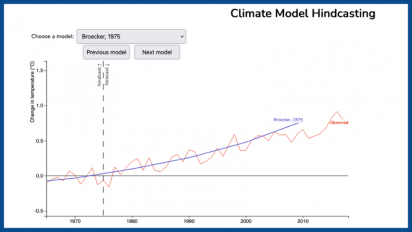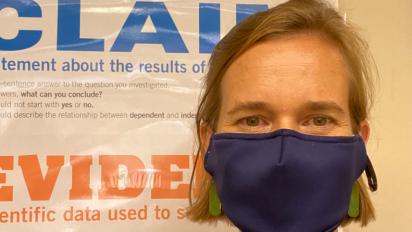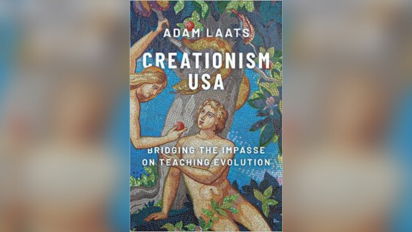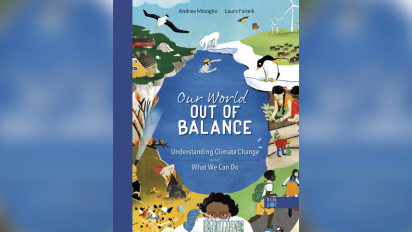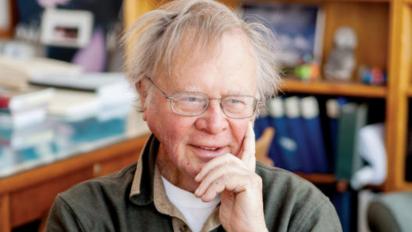Our World Out of Balance: Understanding Climate Change and What We Can Do
Our World Out of Balance is "an excellent reference book for helping children better understand specific aspects of climate change," our reviewer writes.
Finding nonfiction books to help children understand the science of climate change is difficult, so I was excited to dig into Our World Out of Balance, written by Andrea Minoglio and illustrated by Laura Fanelli. Minoglio specializes in translating big science issues into language kids will understand, and he succeeds in doing so throughout the entire book.
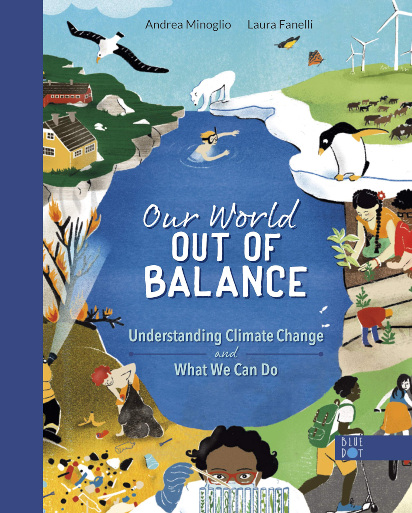 This volume, aimed at children ages 8–12, is structured more like a reference book than a narrative with an overarching story-line. The book is divided into very concise sections each of which explains a specific facet of climate change, such as rising sea levels, melting ice, and plastics in the ocean. So it is not a book a child would want to read from beginning to end. Instead, teachers or parents can consult the book on specific topics to help explain a relevant issue and use the information as a jumping-off point for further exploration.
This volume, aimed at children ages 8–12, is structured more like a reference book than a narrative with an overarching story-line. The book is divided into very concise sections each of which explains a specific facet of climate change, such as rising sea levels, melting ice, and plastics in the ocean. So it is not a book a child would want to read from beginning to end. Instead, teachers or parents can consult the book on specific topics to help explain a relevant issue and use the information as a jumping-off point for further exploration.
Trying to discuss climate change with children can be a depressing endeavor, but Minoglio makes the wise decision to supplement each topic with information not only about what is being done to mitigate various problems caused by climate change but also about what children can do now to help. For example, the section on shrinking forests encourages students to plant trees, become “guerrilla” gardeners, and reuse paper. Though these actions seem simple to adults, they help kids feel like part of the solution. Instilling hope with a call to action is so important for this age group.
The writing itself is simple, straightforward, and easy to understand. Minoglio does not sugarcoat the information. For example, when explaining loss of rainforests, he writes “Farming is the biggest cause of deforestation. The more people there are in the world, the more food we need. The more food we need, the more farmland we need. To make space for more crops or animals grazing, people are cutting down large numbers of trees” (p. 15). This directness does not patronize children but instead clearly identifies causes and effects related to climate change using language they can understand.
Other features of the book that make it a strong learning tool include the use of boldface to emphasize unfamiliar words, like cryosphere and permafrost. Each of these words receives succinct definitions that flow nicely with the rest of the text. Another stand-out feature is the way the book points out the before and after of many of the phenomena. When describing melting ice, for instance, Minoglio contrasts what ice cover used to be like on the planet with what ice cover will be like in the near future if changes are not made. These concrete details really help children visualize how the planet is changing.
The book is beautifully illustrated by graphic designer Laura Fanelli. The images feel like folk art paintings. with bright and inviting colors and busy scenes. While the illustrations enhance the text, I wonder whether the choice of illustrations over compelling photographs will limit its appeal to all elementary students. The work looks and feels more like a picture book and less like the reference book it actually is. Students in upper elementary grades are usually more attracted to realistic imagery in their nonfiction.
Overall, Our World Out of Balance is an excellent reference book for helping children better understand specific aspects of climate change. I can easily see teachers using sections of the book to begin class discussions on the importance of recycling plastics, the reasons for the increase in wildfires, and the price of feeding a growing population. The book not only explains the issues but also offers concrete steps students can take to help improve the world around them. How often does a reference book also serve as an inspirational call to action?
This version might differ slightly from the print publication.


